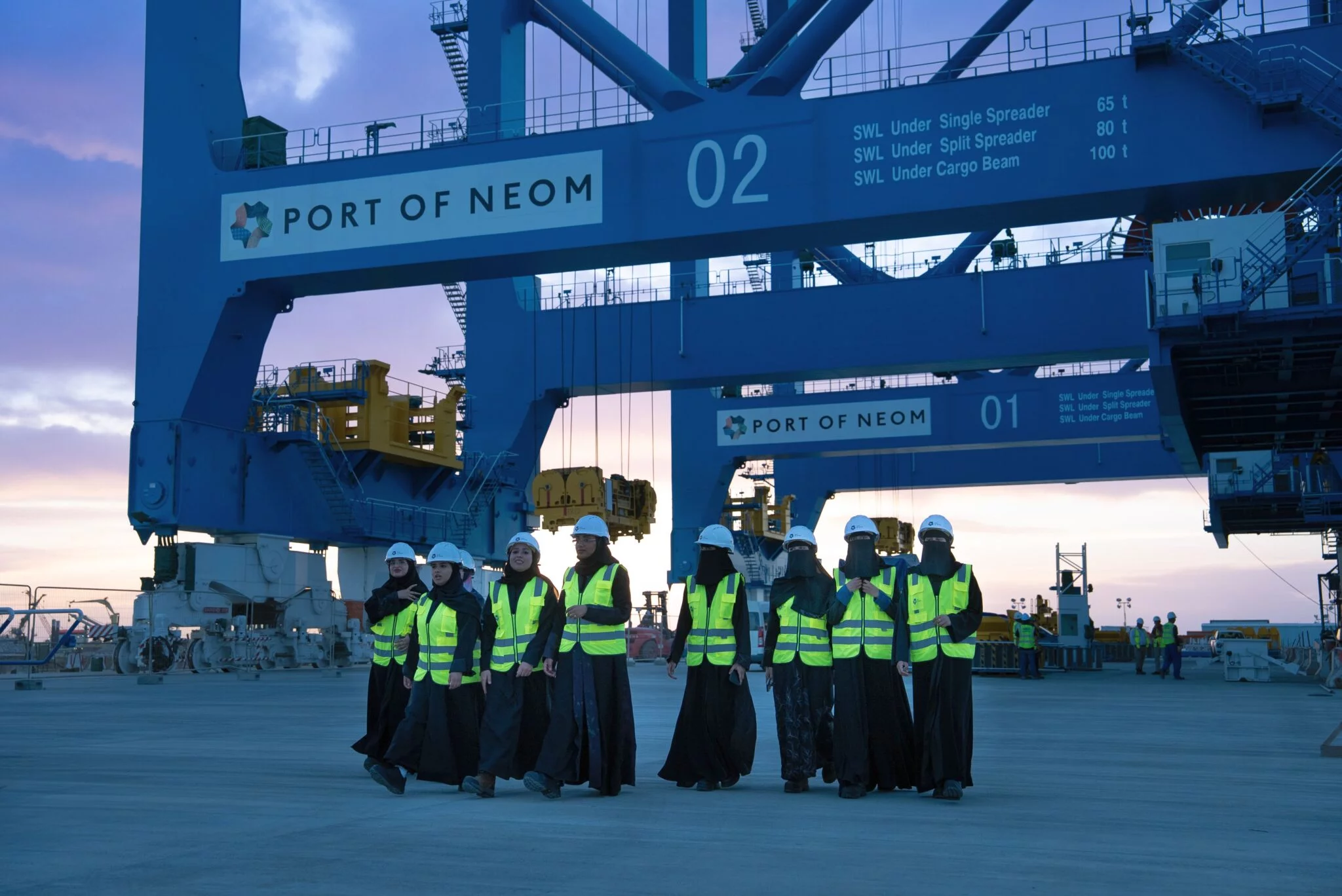Port of NEOM, set to become an advanced and sustainable port, has marked a major milestone with the arrival of the first fully automated, remote-controlled Ship-To-Shore (STS) and Electric Rubber-Tyred Gantry (eRTG) cranes in KSA — advancing its goal to become a global hub for smart, sustainable trade.
Strategically located on the Red Sea, one of the world’s busiest maritime corridors, Port of NEOM is already serving as a critical gateway on the East–West trade route. The newly arrived state-of-the-art cranes will play a critical role in the port’s automation strategy, unlocking the potential for high-volume, high-efficiency operations. Importantly, their remote-control capability allows for a future-ready workforce model, where operators can manage equipment from secure, ergonomic environments.
Development of Port of NEOM continues at pace ahead of the 2026 opening of Terminal 1, a next-generation container terminal, with recent infrastructure milestones including the completion of a 900-meter quay wall and the deepening of the port channel to 18.5 metres — enabling the world’s largest vessels transiting the Suez Canal to call at Port of NEOM.
Terminal 1 will also feature horizontal transport automation as part of the broader goal to achieve full automation. Once operational, these technologies will significantly expand the port’s logistics capacity, driving regional industrial growth, opening access to global markets, enhancing supply chain resilience and unlocking business opportunities.

Sean Kelly, Managing Director of Port of NEOM, said: “The arrival of our first automated cranes marks a tangible milestone as we lay the foundations for an advanced, future-ready port. We’re not only accelerating industrial growth in northwest Saudi Arabia, we’re setting a new benchmark for performance, efficiency, innovation and establishing a vital trade gateway for the Kingdom and the region beyond.”
In parallel with its investments in infrastructure and automation, Port of NEOM is also committed to developing local talent, including training Saudi women to take on high-tech roles. Central to this effort is a pioneering initiative to train the next generation of Production Specialists to gain the skills to become remote crane operators, thereby helping shape a more inclusive future for the logistics and industrial sectors.
Ten participants from the Tabuk region are currently enrolled in an intensive two-year program that blends technical instruction and hands-on training with dedicated mentorship. Hajjer Alatawi, a trainee participating in the program, said: “This experience has shown me that port logistics is far more complex than just moving cargo; it’s about teamwork, precision and responsibility. Seeing more Saudi women entering this space gives me hope for a future where industries are defined by skills, not gender.”
By empowering Saudi workers with high-tech skills, Port of NEOM is supporting NEOM’s vision of being a catalyst for a sustainable, diverse and innovative ecosystem that enables regional economic resilience and advances the goals of Saudi Vision 2030.
similar news



